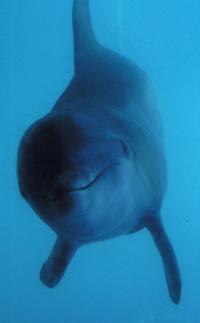TOP STORIES Simian Foamy Virus Found To Be Widespread Among Chimpanzees
Simian Foamy Virus Found To Be Widespread Among Chimpanzees
ScienceDaily - www.sciencedaily.com (Source: Public Library of Science)
07 Jul 2008
Image courtesy of iStockphoto
Area: Africa
Researchers in Cameroon, the Democratic Republic of Congo, France, Gabon, Germany, Japan, Rwanda, the United Kingdom, and the United States have found that simian foamy virus (SFV) is widespread among wild chimpanzees throughout equatorial Africa. Recent studies have shown that humans who hunt wild primates, including chimpanzees, can acquire SFV infections. Since the long-term consequences of these cross-species infections are not known, it is important to determine to what extent wild primates are infected with simian foamy viruses. In this study, researchers tested this question for wild chimpanzees by using novel non-invasive methods.
Cited Journal Article
>>>Molecular Ecology and Natural History of Simian Foamy Virus Infection in Wild-Living Chimpanzees. PLoS Pathogens, 2008; 4 (7): Epub ahead of print.
 Northeast bat population is in its own hell
Northeast bat population is in its own hellUSA Today - www.usatoday.com
D Vergano
Image courtesy of Greg Thompson, USFWS
Area: United States
. . . The species that cluster most tightly together, little brown bats and endangered Indiana bats, are the ones most heavily affected, with 90% dying in some caves. But necropsies of dead bats have not narrowed the fungus down to any one species, or signs of any particular disease common to them all, Veilleux says. . . . Some surveys of summer bat colonies are underway, but the big effort will come this fall, Hicks says, when researchers will try to determine whether bats are arriving in caves already emaciated, or if something is rousting them during the time they should be hibernating, causing the burn-off of fat stores. "The trend is just really bad," he says. "You go to a cave where you saw thousands of bats, now you see hundreds. If you see only a handful next year, then you are looking at their disappearance."
 Sick Salmon: More Alaskan salmon are being found to be diseased, unusable
Sick Salmon: More Alaskan salmon are being found to be diseased, unusableWinston-Salem Journal - www2.journalnow.com
Image courtesy of Los Angeles Times
08 Jul 2008
Area: Alaska - Map It

. . . More Alaskan salmon caught here end up in the dog pot these days, their orange-pink flesh fouled by disease that scientists have correlated with warmer water in the Yukon River. The sorting of winners and losers at Moore's riverbank fish camp illustrates what scientists have been predicting will accompany global warming: Cold-temperature barriers are giving way, allowing parasites, bacteria and other disease-spreading organisms to move toward higher latitudes. "Climate change isn't going to increase infectious diseases but change the disease landscape," said marine ecologist Kevin D. Lafferty, who studies parasites for the U.S. Geological Survey. "And some of these surprises are not going to be pretty."
 Corals, Already in Danger, Are Facing New Threat From Farmed Algae
Corals, Already in Danger, Are Facing New Threat From Farmed AlgaeNew York Times - www.nytimes.com
08 Jul 2008
C Pala
Image courtesy of Christopher Pala
Area: Republic of Kiribati - Map It

Off the palm-fringed white beach of this remote Pacific atoll, the view underwater is downright scary. Corals are being covered and smothered to death by a bushy seaweed that is so tough even algae-grazing fish avoid it. It settles in the reef’s crevices that fish once called home, driving them away. Dead coral stops supporting the ecosystem and, within a couple of decades, it will crumble into rubble, allowing big ocean waves to reach the beach during storms and destroy the flimsy thatched huts of the Micronesians.
Symposium Information
>>>The Good, the Bad, and the Smelly: USGS at the 2008 Coral Reef Symposium
 OTHER WILDLIFE HEALTH RELATED NEWS
OTHER WILDLIFE HEALTH RELATED NEWSImage courtesy of Biology News Net
WILDLIFE HEALTH RELATED PUBLICATIONS
Amphibian malformations and inbreeding
Biology Letters. 2008; [Epub ahead of print] [on-line abstract only]
RN Williams et al.
Sampling for low-pathogenic avian influenza A virus in wild Mallard ducks: Oropharyngeal versus cloacal swabbing
Vaccine. 2008 Jun 26. [Epub ahead of print] [Letter to Editor - no online abstract available]
P Ellström et al.
Attitudes Toward Consumption and Conservation of Tigers in China
PLoS ONE. 2008; 3(7): e2544 [free full-text available]
B Gratwicke et al.
Roadkills of vertebrate species on two highways through the Atlantic Forest Biosphere Reserve, southern Brazil
European Journal of Wildlife Research. 2008; Epub ahead of print [online abstract only]
IP Coelho et al.






No comments:
Post a Comment